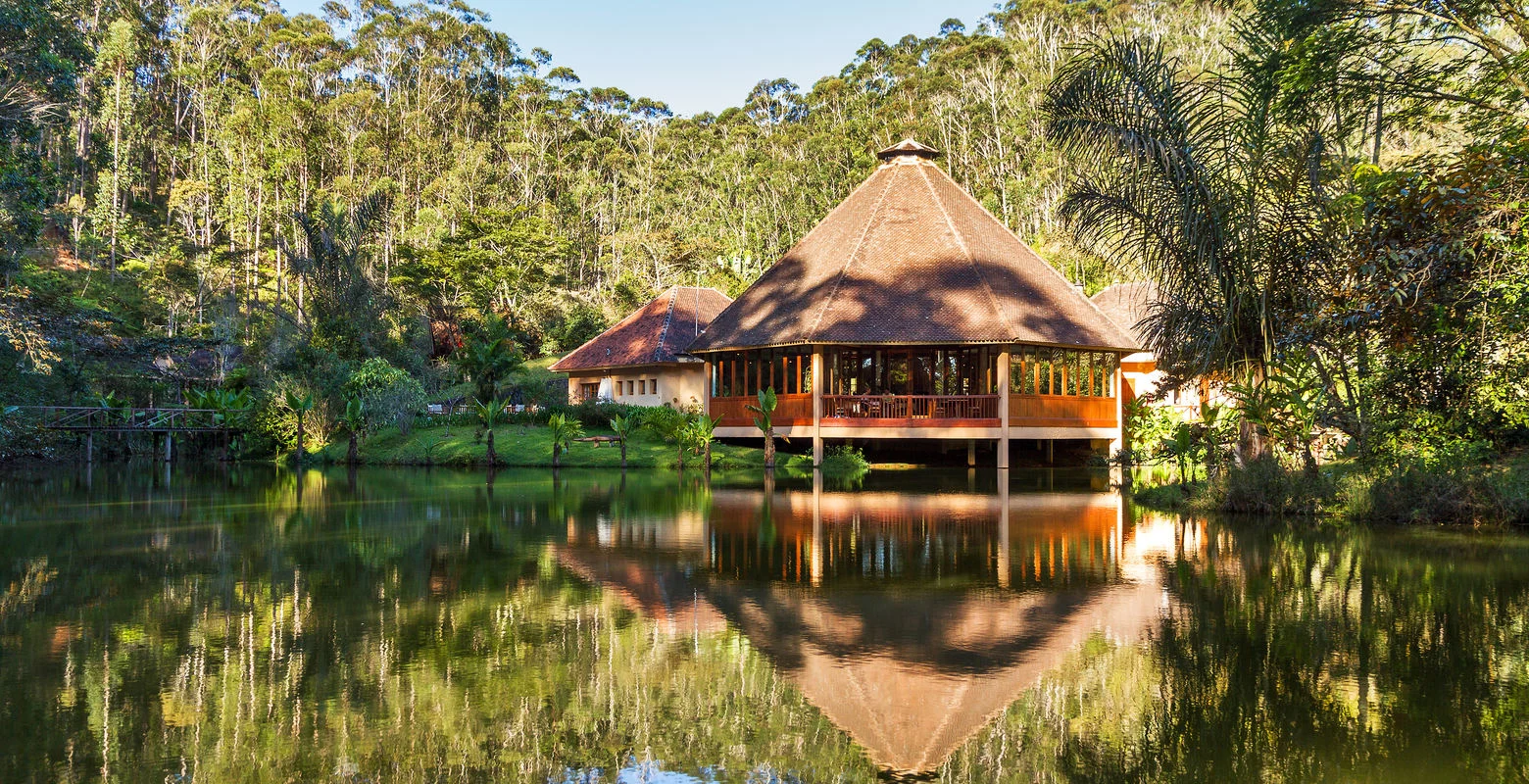Andasibe Mantadia National Park is one of the most spectacular parks in eastern Madagascar. Read on to learn why it’s one of the best places to see the best plants and animals the country has to offer.
About the Park
The park opened in 1989. In the beginning, both areas were part of the same humid forest, but due to human activities, they are now divided into two. Due to the park’s proximity to the capital, most tourists to Madagascar schedule a visit to the park into their trip.
Most of these visitors wish to experience the majestic Indri call which is the highlight of the park. The primary forest of Andasibe-Mantadia is dense and gets a significant amount of rain annually. It is covered with lush vegetation just like moss, and fern trees.
Between September and January is when over a hundred species of orchids bloom. Other common plants that grow here are the Ravenala palm tree, pandanus, bamboo, and tambourissa. The park even has trees from which precious wood such as palisander and ebano are made from.
However, the conservation of this area is also faced with threats because of the illegal deforestation as well as the graphite mines inside the park. The animal diversity in the park is quite remarkable. It boasts 15 species of mammals as well as more than 100 bird species.
Many of which are endemic, like the Madagascar yellowbrow, Madagascar baza, Madagascar wagtail, and the Madagascar serpent-eagle. There are also more than 80 amphibians and 50 species of reptiles, among them the Boa Mandira which is the biggest chameleon on the island, and many leaf-tailed geckos.
You can also find a few local fishes swimming in the small rivers as well as hundreds of insects, most notable of which are the extraordinarily colorful and big butterflies. Andasibe National Park is approximately 2 km from the village.
You just need to follow the main road until you reach the entrance where the Park Office is also situated. If you’re the adventurous type, there’s a more challenging route in Mantadia, where you can enjoy a wilder and denser forest with older and taller trees.
On top of that, fewer people go there compared to Andasibe. Mantadia is more or less 15 kilometers north of Andasibe so it’s recommended to rent a car to get there. Four-wheel drive cars are also suggested especially during the rainy season.
For convenience, you can book a vehicle and a guide at the main office. Andasibe and Mantadia are distinct and each has its quality. Andasibe has more of a park-like atmosphere where the animals are used to seeing people around.
You can even get close to them here. It also has an almost flat terrain and the circuits are quite similar. Whereas Mantadia is best suited for visitors looking for a more rugged experience.
Hikes and Trails
As previously mentioned, Mantadia has far fewer visitors which can be attributed to its trails that range greatly in difficulty and length. The forest stretches from 900 to 1,200 meters. These are the circuits that you can visit in Mantadia:
- Sacred Waterfall Circuit is a cultural path that passes through several places which the ancient inhabitants consider holy. It is a 2-hour walk.
- Rianasoa Circuit is where you will spot some indris and see orchids. You can also visit the sacred waterfall and take a swim in a natural pool. This circuit usually takes one or two hours to complete.
- Tsakoka Circuit is the longest trail in which you’ll try to find more lemurs and other animals. It lasts about 4 hours and there’s also a night tour of 1 to 2 hours.
- Belakato Circuit is a harder trail that goes up and down which also passes by the waterfalls. You can also look for indris and other species here. This trail takes approximately 3 hours.
You can even arrange to visit all the trails mentioned above in a one-day trek. Prices range between 20,000 to 50,000 Ar depending on the duration.
Across the park’s entrance is where you can find the office of the local NGO Mitsinjo. This organization handles the Analamazaotra Forest Station situated just behind their office.
This forest is a community-run reserve which means it’s very well conserved and gives shelter to different kinds of animals. You can see habituated lemurs, some chameleons and geckos, and indri families here.
You can even hand feed some of the animals. They also offer night walks which allows you to spot night lemurs, frogs, and other nocturnal reptiles. Their fee is much cheaper than the National Park yet you have the same chances of finding these animals.
Aside from that, proceeds from the fee are used to help support several community projects. There is also a gift shop with cute handcrafts from the nearby villages. You can find more information about this in our Community Tourism section.
Getting Around
The park is accessible all year round. The main entrance is just a few kilometers away from the main road RN2 which connects Tana and Tamatave. From Tana, the travel time is roughly 3 – 4 hours for a 150-kilometer distance.
Tamatave is 250 kilometers away so it takes about 5 – 6 hours by car. If you are traveling by taxi-brousse and are coming from Tamatave there is a direct service. If you’re coming from Tana, you should stop in Moramanga and switch to a different taxi-brousse that can take you to the park.
Either way, make sure to ask the driver to drop you off at Andasibe village. The entrance fee varies. It costs Ar 25,000 for one day while two days cost Ar 37,000. Many awesome guides can help you spot the animals as well as get around the park. Conveniently, a lot of them speak fluent English.
You can even ask them to recommend you accommodations, there are many options to choose from in Andasibe village. Lastly, there is a well-equipped Park Office as well as a small museum and a gift shop where you can grab some souvenirs and keepsakes. The perfect way to remember the grand time you’ve spent at this amazing place.



